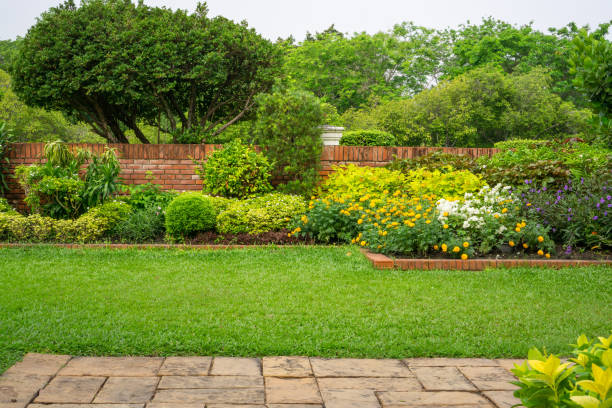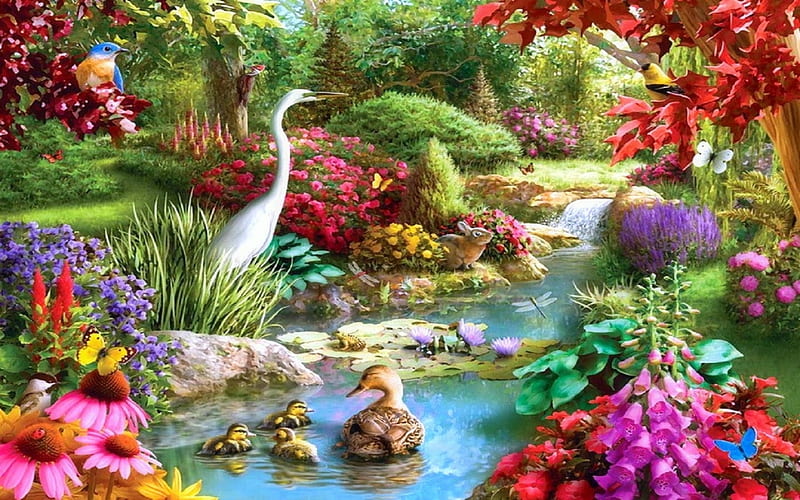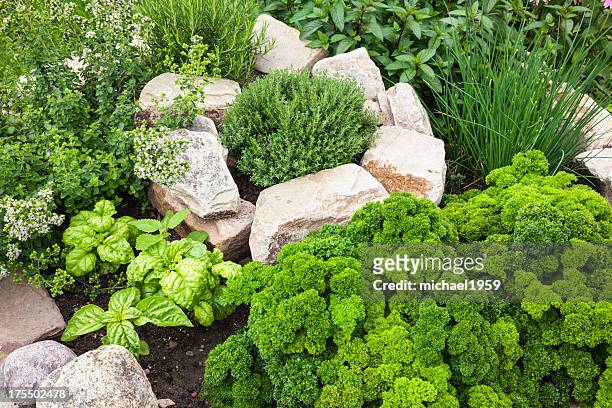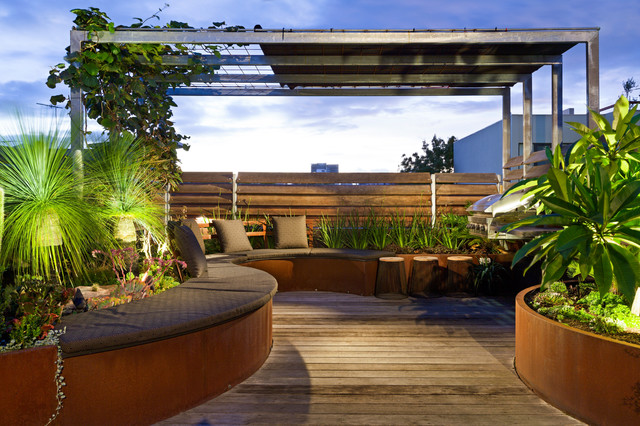Gardening is the practice of growing and cultivating plants as part of horticulture. In gardens, ornamental plants are often grown for their flowers, foliage, or overall appearance useful plants, such as root vegetables, leaf vegetables, fruits, herbs, are grown for consumption, for use as dyes or for medicinal or cosmetic use.
Gardening ranges in scale from fruit orchards to long boulevard planting with one or more different types of shrubs, trees, and herbaceous plants, to residential back gardens including lawns and foundation plantings, all the way to container gardens gowns inside or outside. Gardening may be very specialized, with only one type of plant grown, or involve a variety of plants in mixed plantings. It involves active participation in the growing of plants and tends to be labor intensive, which differentiates it from farming or forestry.

Types of gardens
The domestic garden can assume almost any identity the owner wishes within the limits of climate, materials, and means. The size of the plot is one of the main factors, deciding not only the scope but also the kind of display and usage. Limits on space near urban centers, as well as the wish to spend less time on upkeep, have tended to make modern gardens ever smaller. Paradoxically, this happens at a time when the variety of plants and hybrids has never been wider. The wise small gardener avoids the temptations of this banquet. Some of the most attractive miniature schemes, such as those seen in Japan or in some Western patio gardens, are effectively based on an austere simplicity of design and content, with a handful of plants given room to find their proper identities.
Flowers gardens
A flower garden is any garden or part of a garden where plants that flower are grown and displayed. This normally refers mostly to herbaceous plants, rather than flowering woody plants, which dominate in the shrubbery and woodland garden, although both these types may be part of the planting in any area of the garden.

Woodland gardens
A woodland garden is a garden or section of a garden that includes large trees and is laid out so as to appear as more or less natural woodland, though it is often actually an artificial creation. Typically it includes plantings of flowering shrubs and other garden plants, especially near the paths through it.

Rock gardens
Rock gardens are designed to look as if they are a natural part of a rocky hillside or slope. If rocks are added, they are generally laid on their larger edges, as in natural strata. A few large boulders usually look better than a number of small rocks. In a well-designed rock garden, rocks are arranged so that there are various exposures for sun-tolerant plants such as rockroses and for shade-tolerant plants such as primulas, which often do better in a cool, north-facing aspect. Many smaller perennial plants are available for filling spaces in vertical cracks among the rock faces.


Water garden
Water gardening is gardening that is concerned with growing plants adapted to lakes, rivers and ponds, often specifically to their shallow margins. Although water gardens can be almost any size or depth, they are often small and relatively shallow, perhaps less than twenty inches (50 cm) in depth. This is because most aquatic plants are depth sensitive and require a specific water depth in order to thrive; this can be helped by planting them in baskets raised off the bottom. A water garden may include a bog garden for plants that enjoy a waterlogged soil. Sometimes their primary purpose is to grow a particular species or group of aquatic plants.

Herb and vegetable gardens
Most of the medieval gardens and the first botanical gardens were largely herb gardens containing plants used for medicinal purposes or herbs such as thyme, parsley, rosemary, fennel, marjoram, and dill for savoring foods. The term herb garden is usually used now to denote a garden of herbs used for cooking, and the medicinal aspect is rarely considered. Herb gardens need a sunny position, because the majority of the plants grown are native to warm, dry regions.

Roof gardens
The modern tendency in architecture for flat roofs has made possible the development of attractive roof gardens in urban areas above private houses and commercial buildings. These gardens follow the same principles as others except that the depth of soil is less, to keep the weight on the rooftop low, and therefore the size of plants is limited. The plants are generally set in tubs or other containers, but elaborate roof gardens have been made with small pools and beds. Beds of flowering plants are suitable, among which may be stood tubs of specimen plants to produce a desired effect.


